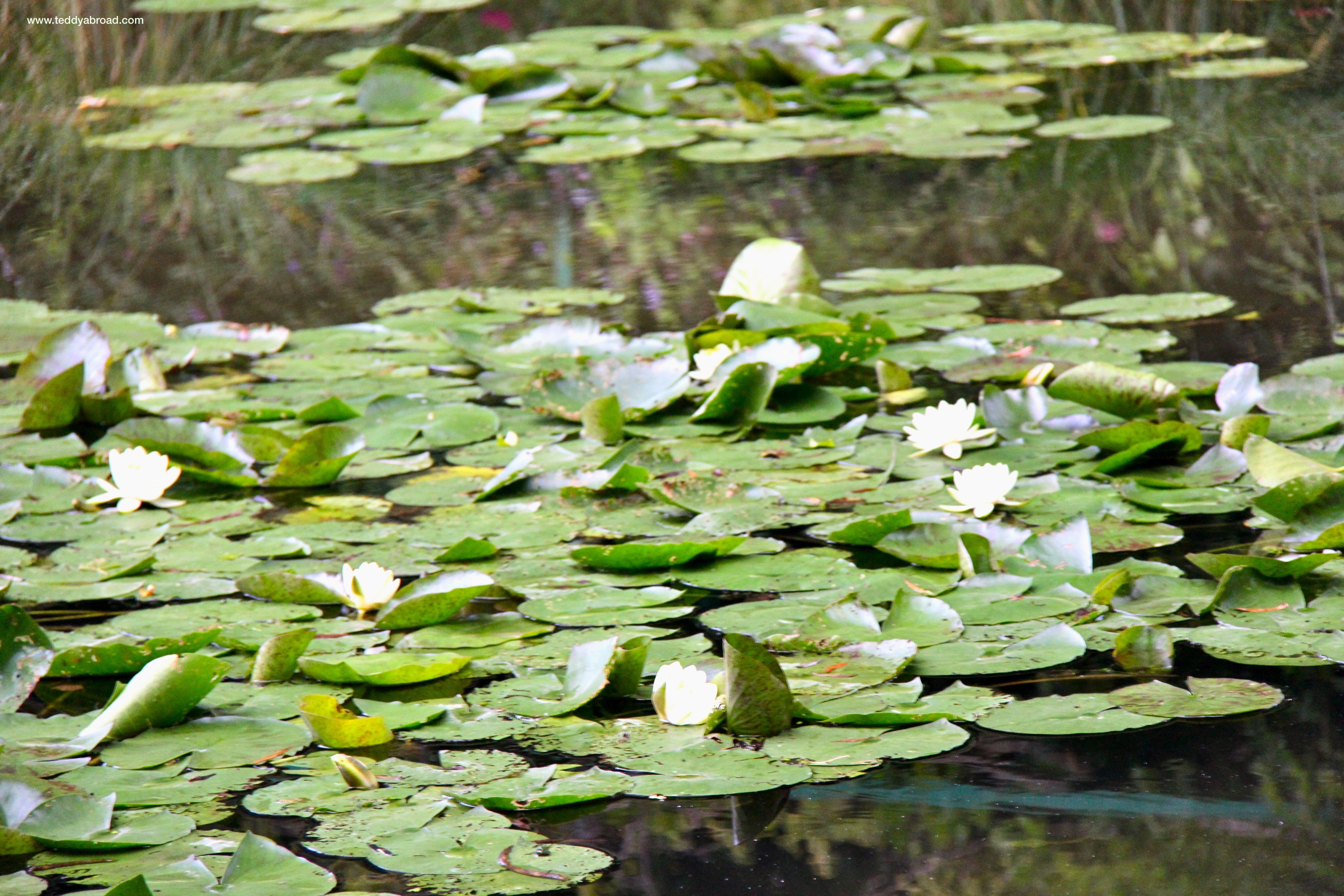
Not many people could claim to have arguably the most famous garden in the world, but one look at the idyllic lily pond and you know you recognise this scene. You can thank the brilliant French impressionist painter Claude Monet (1840-1926), who not only painted this gorgeous garden scores of times, but also built the garden very nearly from nothing.
A little over an hour’s drive from central Paris, the small village of Giverny is generally unremarkable. It sits on a busy road half way between Paris and Rouen in the region of Normandy, and but for its sole claim to fame wouldn’t rate a mention in any travel book. But, oh, what a claim to fame!

An impressionist masterpiece awaits around every corner
Claude Monet was just another struggling Parisian artist for most of his early life. It was really only after the death from tuberculosis of his wife Camille in 1879, that he set his mind almost single-mindedly to making a better life for his two motherless children. He began painting French landscapes in earnest, and was soon earning quite a reputation. He moved his family from one place to another, never finding anywhere satisfactory.
Finally, in 1883, during a train trip between Vernon and Gasny, he spotted Giverny out the carriage window. He moved his children (and his new partner, Alice Hoschedé, and her children) first to nearby Vernon, and then to a rented house and two acres in Giverny. The house sat on the main road and had a large outbuilding that he used as a studio. Monet began building up the garden while his artworks started to become more and more popular, providing him with the income he had long craved. Eventually, in 1890, his fortunes had improved enough to allow him to buy the house and land.
From his new base in Giverny, Monet was at his most productive. Through the 1890’s he painted his most famous works, including a number of important “series”. These included Rouen Cathedral, Mornings on the Seine, and of course, the paintings of his own now lush and extensive gardens, especially the water lilies, and the bridge. Eventually, as he got older and his income increased even more, Monet employed a number of gardeners to do all the hard work, though he always remained the architect of his garden, giving strict and precise instructions to his staff.

Monet's house and studio are also open to visitors
Monet died from lung cancer in 1926, and is buried in the Giverny church cemetery. The house and gardens passed to his son Michel, who kept them in the family until 1966 when he bequeathed them to the French Academy of Fine Arts. The house and gardens were, by that stage, somewhat rundown and in need of restoration. Through the Foundation Claude Monet many years of restoration work followed, until the gardens and house were finally opened to visitors in 1980.
The site (indeed, much of the village of Giverny) is now an homage to Claude Monet. The gardens are kept lush and luxurious, and as close as possible to the way they were when Monet painted them. In fact, walking through the gardens, especially around the lily pond, feels eerily like walking through one of Monet’s paintings. He was certainly right about the light in Giverny – the way it interacts with the garden and splashes off the lily pond is startling and unique. Wandering through the gardens is both relaxing and inspiring. Teddy may not be a painter, but he loves taking photographs – and he took hundreds. There seems to be a unique and magical new artwork at every step.

Monet's garden - relaxing and inspiring
In addition to the extensive gardens, visitors can walk through Monet’s house and studio. It is easy to stand at the large second floor window of Monet’s bedroom, look out over the extensive gardens and pretend to be Monet himself surveying his domain with deep satisfaction.
There is, of course, a souvenir shop with an exhaustive collection of Monet memorabilia (including some fantastic full-colour books), and a very nice, relaxing cafe.
Whether a lover of art, a lover of gardens, or both (or perhaps even a lover of the movies, as the bridge and lily pond featured strongly in Woody Allen’s recent Academy Award winning movie Midnight in Paris), Monet’s garden at Giverny is a must-see for any lover of things French.
(There are many more photos of Monet’s Garden in the desktop backgrounds and iPhone wallpaper pages.)

Teddy found Monet's garden at Giverny very relaxing!











salutations from over the sea. Great post I must return for more.
Hello there, simply turned into aware of your blog thru Google, and found that it is really informative. I’m gonna watch out for brussels. I will appreciate if you continue this in future. A lot of other folks will be benefited from your writing. Cheers!
[Brussels is definitely on the Agenda! :-)]
hey nice article thanks for your work!
… [Trackback]…
[…] There you will find 69558 more Infos: teddyabroad.com/?p=1263 […]…
I just want to thank you so much because that’s exactly what I was looking for.
[Glad to help!]
really an amazing article to read.
great way yo put that together cheers !
… [Trackback]…
[…] Read More: teddyabroad.com/monets-garden-giverny/ […]…
[] I absolutely love reading everything that is posted on your website.Keep the tips coming. I loved it!
[…] (source:teddyabroad) […]